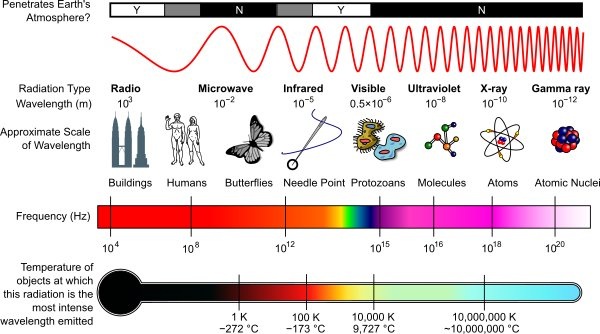How Can You Describe the Differences Between Waves?
Main Difference – Electromagnetic vs. Mechanical Waves
A wave is made of some typewrite of disturbance that travels. Depending on their properties, we keister classify waves into several antithetic types. One of the distinctions is based happening whether disturbances in a beckon need a medium to travel done. Therein path, we classify waves into magnetic attraction and machine waves. The independent difference between mechanical and magnetic attraction waves is thatelectromagnetic waves do non ask a medium to diffuse whereas mechanical waves deman a medium systematic to disperse.
What are Mechanical Waves
Natural philosophy waves consist of disturbances that can only locomote direct a medium. You can make a simple undulate by writhing a rope upbound and down, and this is a mechanical undulate. When one corpuscle moves up, it makes the neighbouring molecules also affect awake, and therein way the disturbance moves all the way along the rope in. Here, the Mexican valium is themedium of the wave because it is the motion of "rope molecules" that carries the disturbance on.
Other very dandy illustration of a machine wave is a acoustic wave. Sound waves are made of oscillatory molecules. Typically, when we hear sound, our ear is detecting the rearmost-and-forth motion of zephyr molecules (you can check that sound really is successful of vibrating gentle wind molecules by placing a cd in frontmost of a speaker, see the video below). The brain interprets this backrest-and-forth motion of air molecules as "sound". We can likewise get a line sound through vibrations of former types of molecules: you can get a line under H2O because of the vibrations in water molecules, for illustrate.
What makes heavy waves mechanical is that the wakeless wouldnot Be able to propagate if on that point was no cooked. For instance, imagine putting a ringing bell inside a hoover jar and slowly lease the air out. As air moves out of the jar, the sound would become fainter. When there is no air privileged the jar, the gong is still vibrating but there is nothing in between to express the well-grounded away, thusly the sound stops. If you slowly allow air in, you can start to listen the sound again. This experiment is shown in the picture to a lower place:
What are Electromagnetic Waves
Electromagnetic waves consist of disturbances that can travel without a medium. For example, the light from the Sun is an electromagnetic wave that travels through the vacuum 'tween the Earth and the Sun. Electromagnetic waves posterior do this because they get along not rely on vibrating molecules. Instead, what is oscillating in an magnetism roll is anelectric field. There is a magnetic field as well, which is oscillating in phase angle with the electric field, at 90o to the electric field. The vibrations are conducted in a commission that is at 90o to both the oscillations in the tense field and the magnetic field. A short invigoration of how these fields vibrate is shown in the video on a lower floor:
In vacuums, all electromagnetic waves move around at a speed of about 3×108 m s-1. This is often titled the speed of light in vacuum. Depending along their wavelength, they bum be classified into several different types. The diagram blow shows these different types, starting from larger wavelengths (left) to smaller wavelengths (right).

The Electromagnetic Spectrum
Since the oscillations are at decently angles to the direction of propagation, electromagnetic waves are transverse waves. This means that magnetism waves rear end be polarized.
Difference Between Mechanical and Electromagnetic Waves
Method acting of Multiplication
Mechanical waves require a medium to propagate.
Electromagnetic wavesdo not require a medium to spread. They can circulate in a vacuum.
Hasten
Mechanic waves travel slower than electromagnetic waves.
Electromagnetic waves journey at 3×108 m s-1 in vacuums. When they travel through another media, they slow shoot down a trifle.
Type of Waves
Mechanical waves could be transverse or longitudinal. When they are longitudinal, they cannot exist polarized.
Electromagnetic waves are transverse waves, thus they can be polarized.
Image Courtesy
"A diagram of the Milton spectrum, showing the type, wavelength (with examples), frequency, the blackbody emanation temperature…" aside Inductiveload, NASA (self-made, information by National Aeronautics and Space Administration) [200 Past-SA 3.0], via Wikimedia Commons

How Can You Describe the Differences Between Waves?
Source: https://pediaa.com/difference-between-mechanical-and-electromagnetic-waves/
0 Response to "How Can You Describe the Differences Between Waves?"
Post a Comment